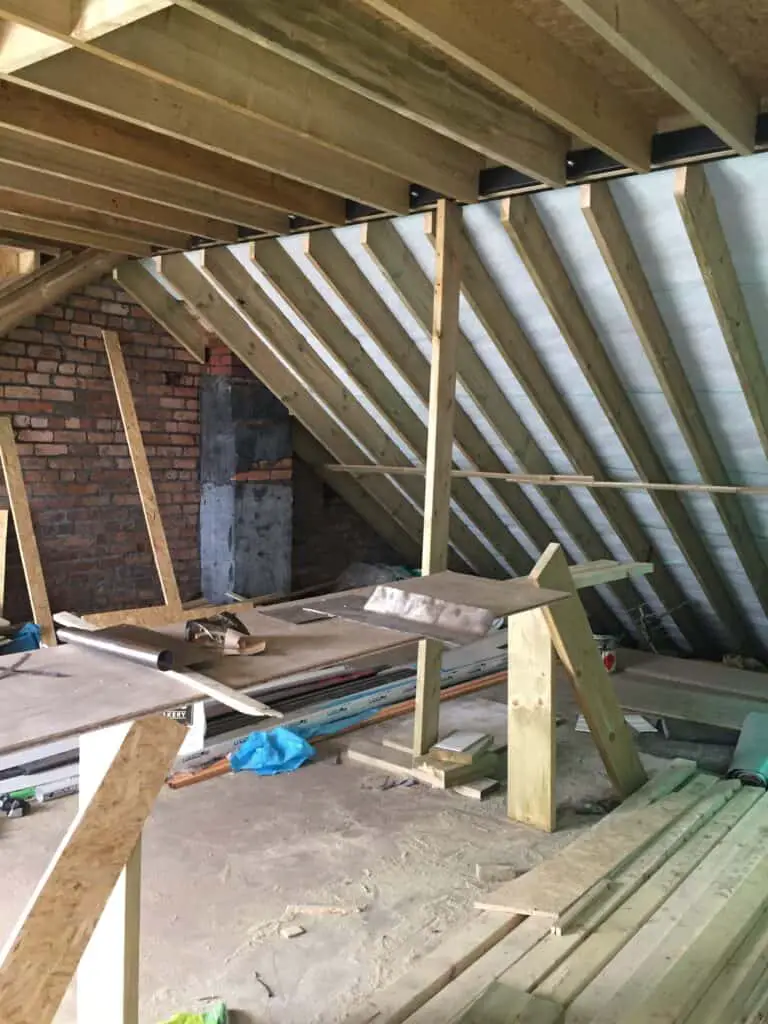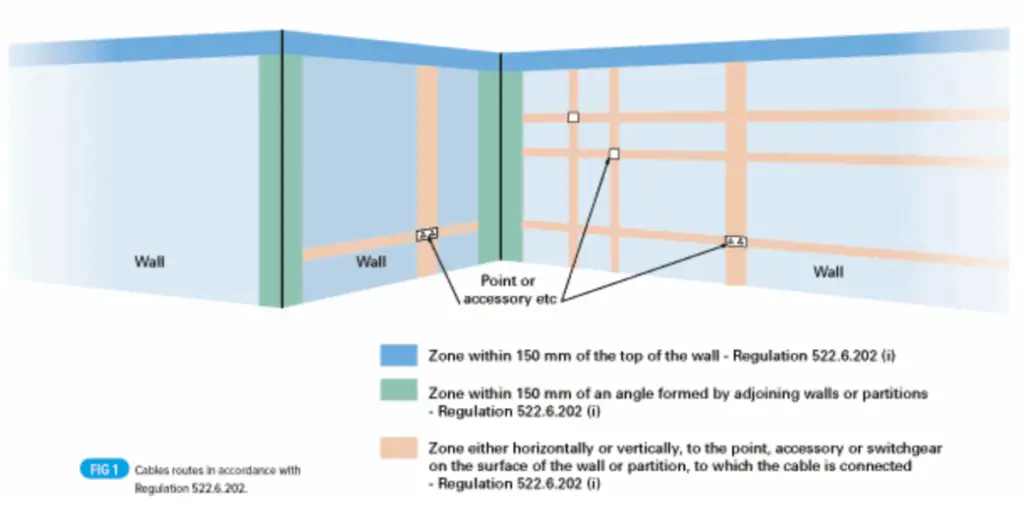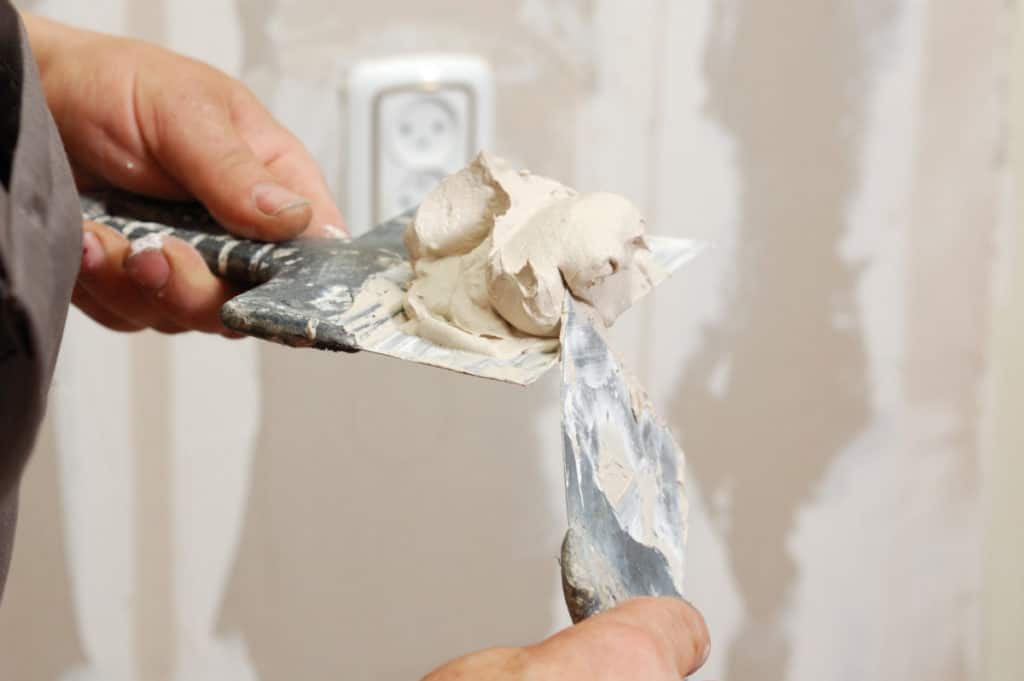Whilst reading through some electrical forums I came across an unhappy homeowner. They commented that they were upset because the electrician they hired to do their house rewire hadn’t ‘made good’ to the walls after finishing the electrical work.
The general feeling on the forum was that the homeowner should have known the electrician wouldn’t plaster after the rewire. However, I’m not sure this point of view is fair. Therefor I decided to do a little research and put together this article about how much filling and plastering you can expect from an electrician after a rewire, or any smaller electrical jobs. Hopefully, this can help customers and prevent the upset that the above-mentioned homeowner suffered.

All of the electricians polled answered that they will not plaster after a rewire. Most state that re-plastering and making good to the walls is not included in their quote. Some electricians choose to state that the quote includes the cost for a plasterer to come in afterwards and complete the job
The table below shows a small poll I conducted to discover if some electricians are willing to plaster after a rewire.
| Do you plaster after a rewire | Number of electricians |
|---|---|
| Yes | 11 |
| No | 0 |
We can see from the results that electricians are pretty unanimous in their dislike for plastering. I also came across several plasterers complaining about the mess an electrician had left after attempting a little plastering work.
It’s worth noting that this question relates to plastering after a rewire and doesn’t include all electrical work. We’ll see later on that most electricians are happy to do a little making good to walls and ceilings, using electrician’s favourite soft fill gap filler here on amazon
A rewire is a large job for an electrician that causes a lot disruption for the homeowner and repairing the walls on a large scale is best left to the professional plasterers.
Rewiring a House Causes a Lot of Damage to the Walls
Rewiring a house is a messy process. People are often surprised by how much damage is done to the walls. An electrician has to cut vertical grooves in the brick work (known as chasing out a wall) to allow cables to be buried in the wall. This is so they can reach down to the sockets and light switches without being seen.
This image gives an idea of the zones that electricians must run the cables in. (Source)


As you look around your room you’ll notice that everywhere you see a socket or a light switch you can predict where the wall has been chased to allow the cables to get there. This adds up to a lot of wall being cut into and a lot of plastering that needs to be done
Is worth noting we can mount the cables onto the wall instead, by attaching something called trunking or conduit to the wall and placing the cables in this.
By using conduit it protects the cables and the installation process creates much less mess as the walls do not need to be chased out or cut into.
The downside of using trunking or conduit systems is that it is not very aesthetically pleasing and is more widely used in commercial premises. Most homeowners don’t want plastic trunking stuck on their walls so they put up with the mess caused by the standard rewire.
Why Electricians Don’t Plaster After a Rewire
The main reasons electricians don’t plaster after a rewire are
- Plastering is a difficult skill to master
- The finish is not as good as a qualified plasterer can achieve
- Other electrical jobs to move onto
- It’s not economically viable to have electricians doing the job of a plasterer
Plastering is a specialist skill set that professionals make look a lot easier than it is. We see plasterers skimming with ease and assume we can do the same. The reality is that plastering over the new cables buried in the wall is a very difficult task to make look perfect.
Slapping some plaster on the chases is simple enough, but making the finish look smooth and even is another matter altogether. If the person chasing out the walls hasn’t used a machine, such as this one on amazon, the walls can be an awful mess. Often it is better to get a room completely re-plastered after a rewire so that the walls have an even finish and don’t bear the scars of the chases.
When researching many plasterer forums I came across had plasterers criticising electricians’ attempts at making good to walls.
Trying to get a finish that the customer is happy with is difficult. As an electrician attempting to plaster, we now find ourselves in a situation where the standard of our electrical work is being judged on how well we can plaster to finish the job off!
It’s far easier to tell the customer that making good to the walls is not part of the quote for the rewire or to sub-contract the work out to a plasterer to finish the job off correctly.
In my example at the start of this post, I think the problem comes when the electrician has not made it clear from the start that the plastering is not part of the quote. Most customers are happy to do this work themselves or arrange someone else if they are aware of this before work begins.
Will an Electrician Make Good to Walls After a Small Amount of Work?

Most electricians will fill or plaster small holes where it would be uneconomical to get a plasterer to do the work. For example, if I need to drill a hole in a wall to route a cable through, I will fill the hole myself and apply a small amount of paint afterwards.
The best advice to customers is to talk about your expectations with the electrician before any work takes place (or any money exchanges hands!) Online websites such as rated people (linked here) are a good place to get several quotes and ask questions without financial obligations upfront.
Do Electricians Patch Ceilings?
Electricians will do a small amount of patch work to ceilings if they have caused damage. If a larger area of making good is required then it is a good idea to employ a plasterer and painter to ensure the best possible finish.
You Can Plaster Over Electrical Cable
When ever I’ve put cables in a wall I’ve always used trunking or a capping, but after researching it turns out you can plaster directly onto a cable.
Even if it’s possible, general opinion is that this is not the best idea as this plasterer’s forum post discusses
Using conduit makes it possible to pull the cable back up and down again if needed without having to damage the wall (although this is possible it can be very difficult especially with the very narrow conduit available)
Using capping over the cable has the benefit of offering some protection to the cable from nail strikes and damage. Plasterer’s also like it because it helps give their plaster something to bind too which creates a better finish.

